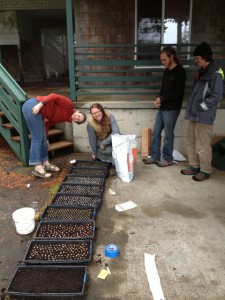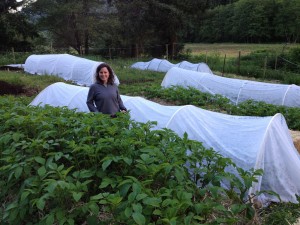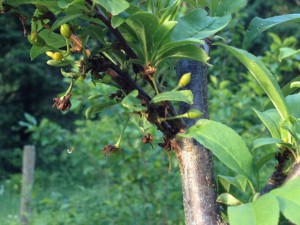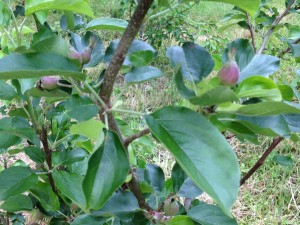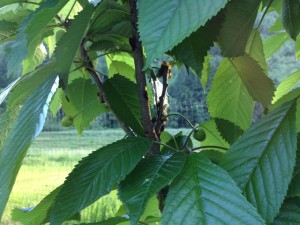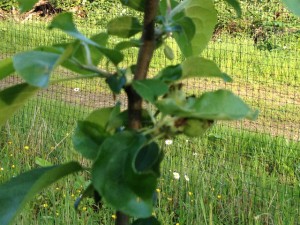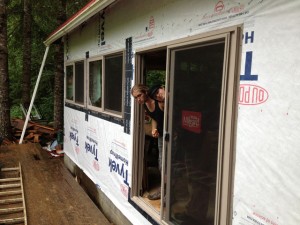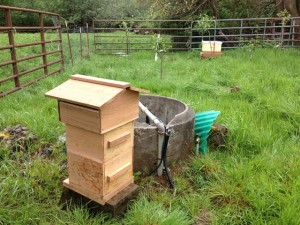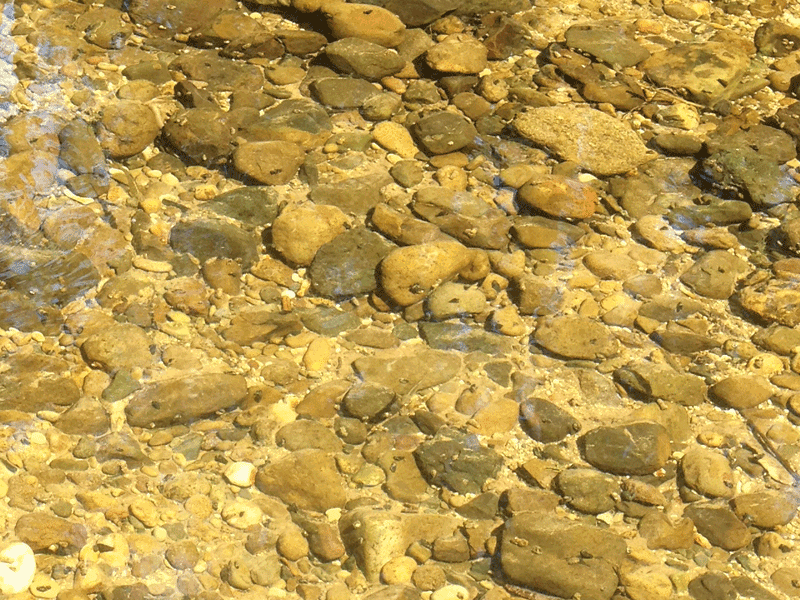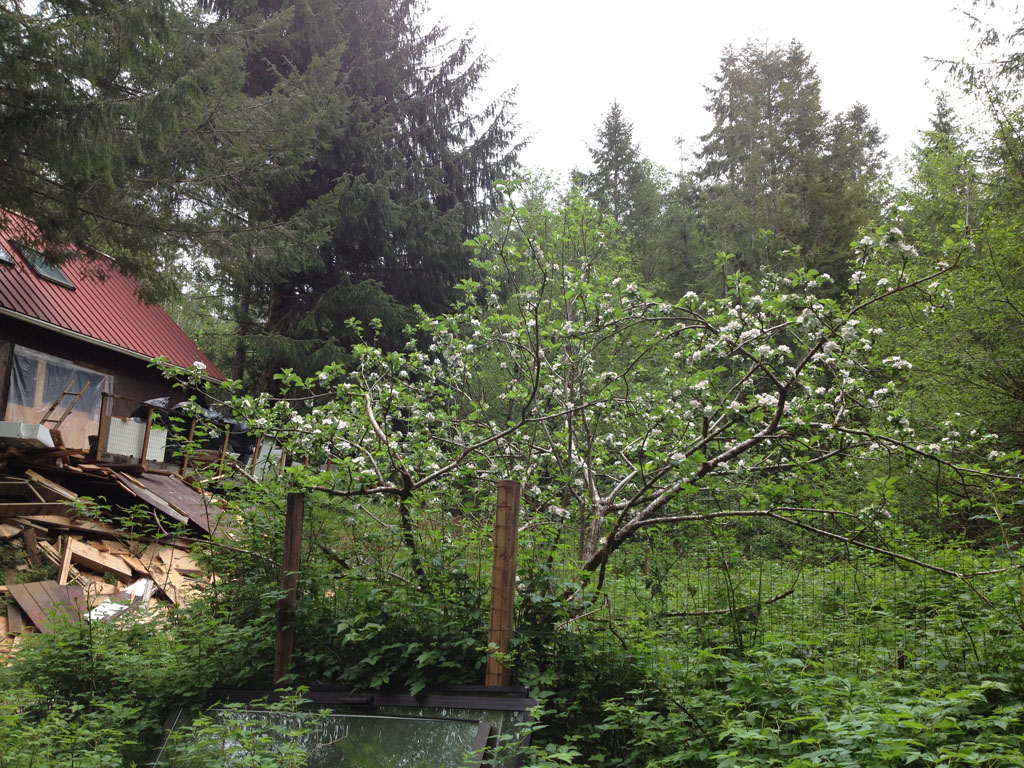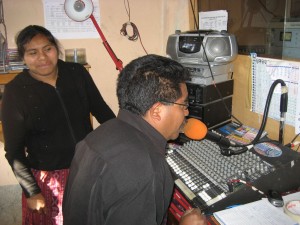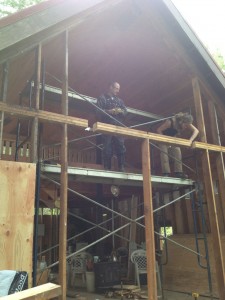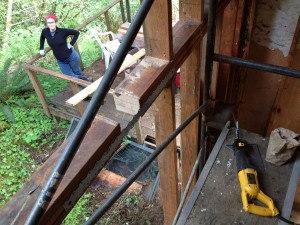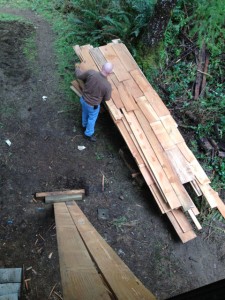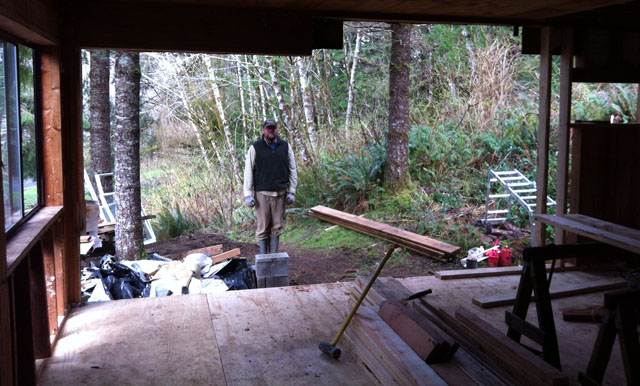I don’t know why so many of my posts are titled after rock songs; I guess I have a constantly running soundtrack of 70s and 80s music running through my head at all times (today’s post is brought to you by Rush).
Anyway, a few days ago we were paid a visit by Joe the Forester, a friend of ours who works for the state forestry department. Timber is a major component of Oregon’s economy, and they have a lot of highly trained people on staff who manage forestlands and know a LOT about trees. We love forests and want to be responsible stewards of this amazing place, so we invited Joe out to our property to walk around and dispense any advice he might have on what we should be doing with 32 acres of forest.
And walk around he did! The guy never tired out, walking with us for three hours (it’s a big property). Any time we mentioned another different microclimate, he would ask to see it. “Sure,” I’d say, remembering that every other previous visitor had been excited about seeing the property, but after an hour of buswhacking, climbing over mossy stumps, pushing through brambles, and clambering up muddy inclines was MORE that ready to observe the natural beauty from the comfort of our deck chairs. Nope, not Joe. He’s like the energizer bunny, but wearing green instead of pink.
The evening was like being in a natural sciences class, one where your head hinged open and someone poured useful information in. We talked some about tree species, especially the four major marketable trees:
| hemlock (Tsuga spp) |
This is the one we have the most of. Evergreen, shade-tolerant, identifiable by wispy, drooping branch tips. Makes rich, straight-grained boards. Not related to poison hemlock. |
| spruce (Picea spp) |
A conifer that can live a very long time and doesn’t mind “wet feet,” so it does well down by the creek. Animals don’t like eating it, so saplings don’t need protection. The tips can be made into a syrup, contain vitamin C, and can also be used as a tea. Before petrochemicals, pitch was made from spruce sap. Identified by its stiff, sharp needles that hurt when you grab it. |
| Douglas fir (Pseudotsuga menziesii) |
Coniferious, large. Dark green color, swooping branches. Wood is very strong, and vertical grain fir commands a high price. The old king of the northwest, this is the one that left the 12′ diameter stumps you see loggers posing with in black and white pictures from the turn of the century. |
| alder (Alnus rubra) |
The only deciduous tree on the list, alder is plentiful and fast-growing. It often has a curved trunk, as it grows towards the light. Grows OK in marshy lowlands, and after about 30 years, reaches a point of diminishing returns in its growth cycle. It’s a nitrogen-fixing pioneer species, and is often covered with symbiotic moss. |
We also talked about some other less-common species of trees that would be interesting to have on the property. Like us, Joe thinks biodiversity is a good thing.
| western red cedar (Thuja plicata) |
Smells great, thrives in moist soil and shade, and the wood is highly insect and rot resistant. Unfortunately, it’s very tasty to browsing animals like deer and elk, so if it is to survive into adulthood, it must be protected or planted really close to areas of high human activity. Lots of uses by native Americans, here is a great article on it. |
| sequoia (Sequoia spp) |
This is the “giant tree” from California. A throwback to Jurassic times, it’s endangered and our region of Oregon is one of the few places it will grow well. I like the fact that its name has every vowel in it, yet only two consonants. |
redwood
|
Another conifer with insect and rot resistant properties. |
pacific yew (Taxus brevifolia)
|
Extremely slow growing and smaller than most of the other trees, this shade-tolerant conifer is used to make the best bows in the world. It has been known since ancient times for its mystical properties as well, linking the worlds of the living and the dead, and can be found planted in cemeteries all over Europe. Interestingly, this one IS poisonous, unlike the hemlock. |
We also talked about overall forest management. A forest, it seems, follows the same basic purning rules as fruit trees. To get the most health, you need to take out branches that are too close together, so the others can get light and grow to their best size and strength. This has to be done early enough, because if too much time goes by, they grow too thin and weak and will never have their best shape. One of the clever rules of thumb foresters use is that if you count how many trees are within 11.8′ of where you are standing and multiply it by 100, it gives you the number of trees per acre in that stand. There are known numbers of trees-per-acre that yield the healthiest trees… too few, and scrub grows between the trees and chokes the forest; too many, and you get tall weedy trees racing each other for the sunlight. They sacrifice strength in the process, and the whole forest will blow down in a decade when the next big wind storm hits.
This is the kind of forest we have on the east 16 acres, it seems. Joe hated to tell us, as he likes forests as much as we do, but our best bet is to clear cut the whole thing. “You can take it down now, and get a little money for the log sale, or you can leave it up and it will blow down anyway in the next few years.” The recommended density for a stand of hemlock like ours was about 225 trees per acre; he counted ours at about 800. And, yes, once we knew what we were looking for, it was quite clear that our trees were too skinny, and there were already plenty lying on the ground. He went on to explain that we were about 15 years too late to selectively thin it; the trees were already too weak, and all thinning would do is hasten the blowdown. “One option you do have is to leave these few scattered trees that are strong looking,” he pointed to a few that had grown well despite the adversity, “and they will probably scatter seed over a few years, reseeding the forest and saving you from having to hire a tree planting crew.”
It made us all pretty sad to imagine this desnse, green, luscious forest as clearcut, but Joe pointed out that our forest was quite tall right now, only 30 years after the last clearcut, so if we managed the forest well (and thinned after 15 years, as should have been done) then by the time I’m 70, we’ll have a forest we can really be proud of. That’s a pretty long view, but I’m getting old enough now that I probably ought to start thinking that way. Luckily, there are higher priority forest management issues and we can wait until next year to deal with this (emotionally, as well as logistically).
Down in the lowland, we had better news. We have two or three acres of mostly alder, and we need it cleared so we can plant all the vegetables next season. Joe informed us that our trees are not ideal, but are definitely of marketable size, and we can’t expect them to get any better- apparently, alder maxes out at about 30 years, and doesn’t increase in marketability from there. Once the ground firms up in the summer, it should be pretty easy for a logging crew to get in there and take it all away. The market for alder is pretty good right now, and the way it works is that we contract with the logger, he cuts it all and trucks it away, and the mill writes two checks based on the percentage we agreed to in the contract- one for the logger, one for us. Interesting. I’m kind of pleased; before I knew anything about this, I was just hoping to not have to PAY someone to remove trees. Turns out, if you are a timber baron like us, people pay you for trees! Who’d have thought?
Our next step is to contact the “stewardship forester,” another fellow who works for the state. His job is to advise landowners with forest land (like us) on how to best manage their property, what aid and programs are available, what restrictions apply, and so forth.
 Tarnation! Things have been busy here in hillbillyland. There’s a lot of farming, building, foresting, and so forth going on… so much, we hardly have time to think. But occasionally, we do get a chance to take a break and let loose. Here we see Emily shooting a black powder longrifle, as Eric and Taylor look on. Eric is a relatively new friend of ours, and he seems to be my kind of people- energetic, friendly, and crafty. He made that flintlock from scratch. No, not a kit: from bits of wood and metal. I’ve been itching to do that for a long time, and I think that when we get the house done, it’s time to get the checked off my list! He seems game to help, though he confessed to me that he actually buys pre-forged barrel blanks and then taps them for the various locks, frizzens, sights, and then engraves them. He doesn’t actually do the blacksmithing himself, but has always wanted to learn how to. Sounds like I have to get him and my buddy Mark together; maybe we can have a collective awesome-gun-making week at my house next year?
Tarnation! Things have been busy here in hillbillyland. There’s a lot of farming, building, foresting, and so forth going on… so much, we hardly have time to think. But occasionally, we do get a chance to take a break and let loose. Here we see Emily shooting a black powder longrifle, as Eric and Taylor look on. Eric is a relatively new friend of ours, and he seems to be my kind of people- energetic, friendly, and crafty. He made that flintlock from scratch. No, not a kit: from bits of wood and metal. I’ve been itching to do that for a long time, and I think that when we get the house done, it’s time to get the checked off my list! He seems game to help, though he confessed to me that he actually buys pre-forged barrel blanks and then taps them for the various locks, frizzens, sights, and then engraves them. He doesn’t actually do the blacksmithing himself, but has always wanted to learn how to. Sounds like I have to get him and my buddy Mark together; maybe we can have a collective awesome-gun-making week at my house next year?
